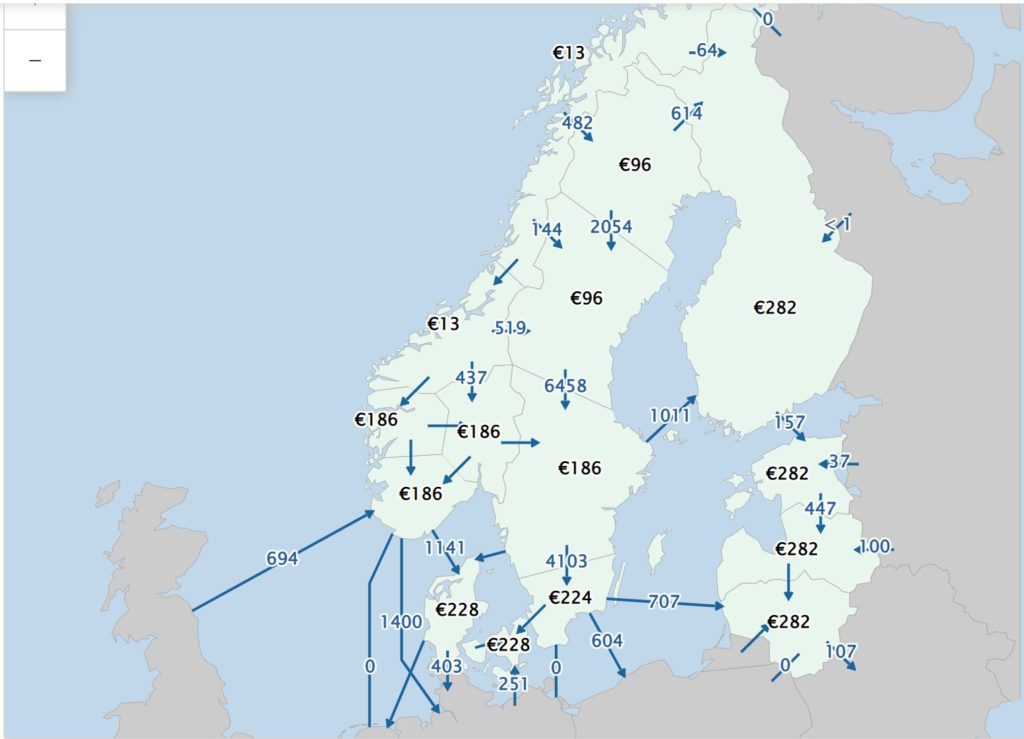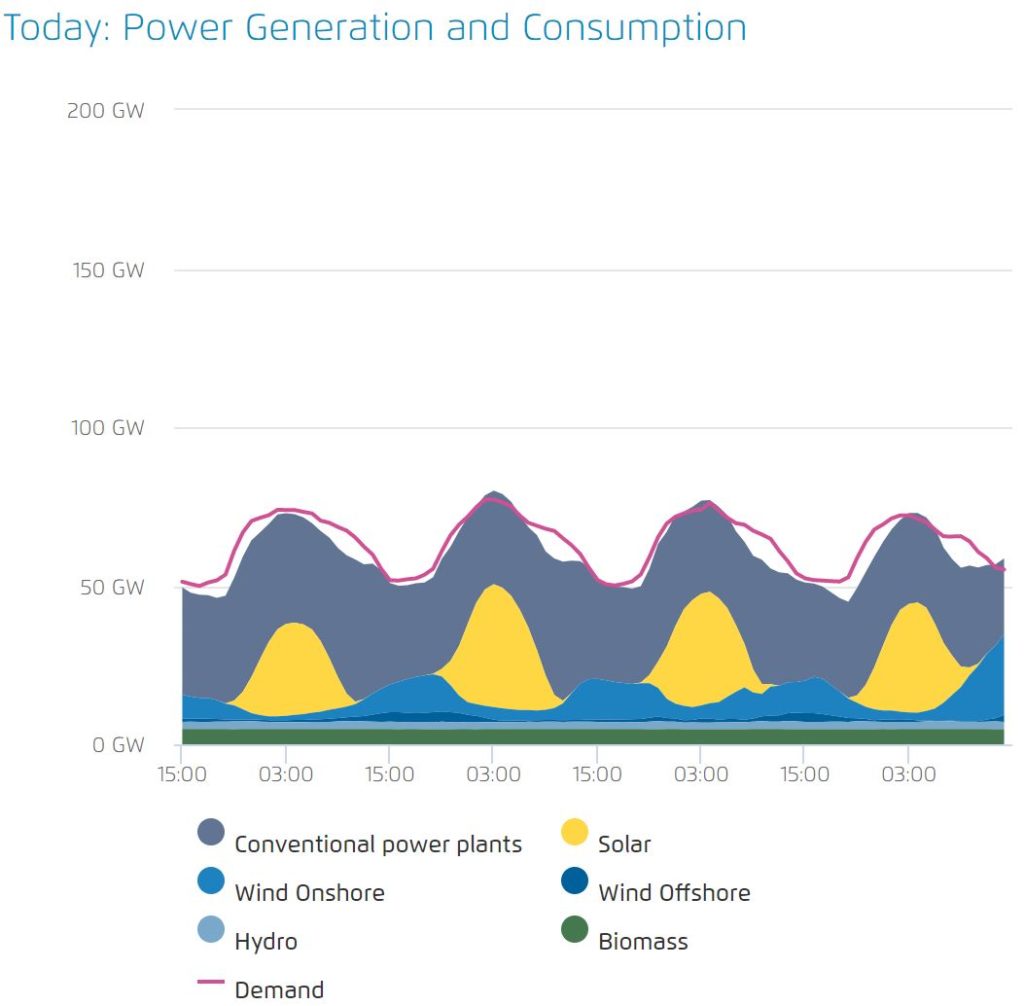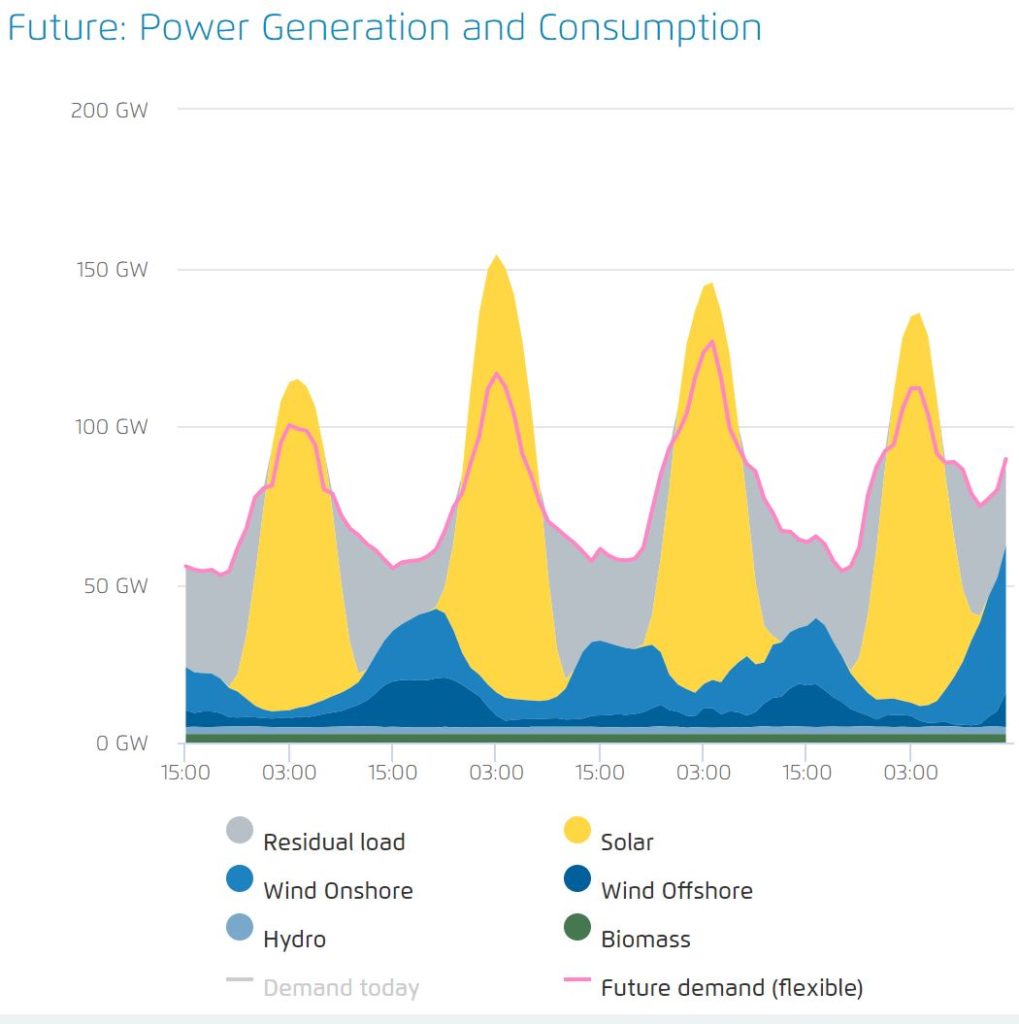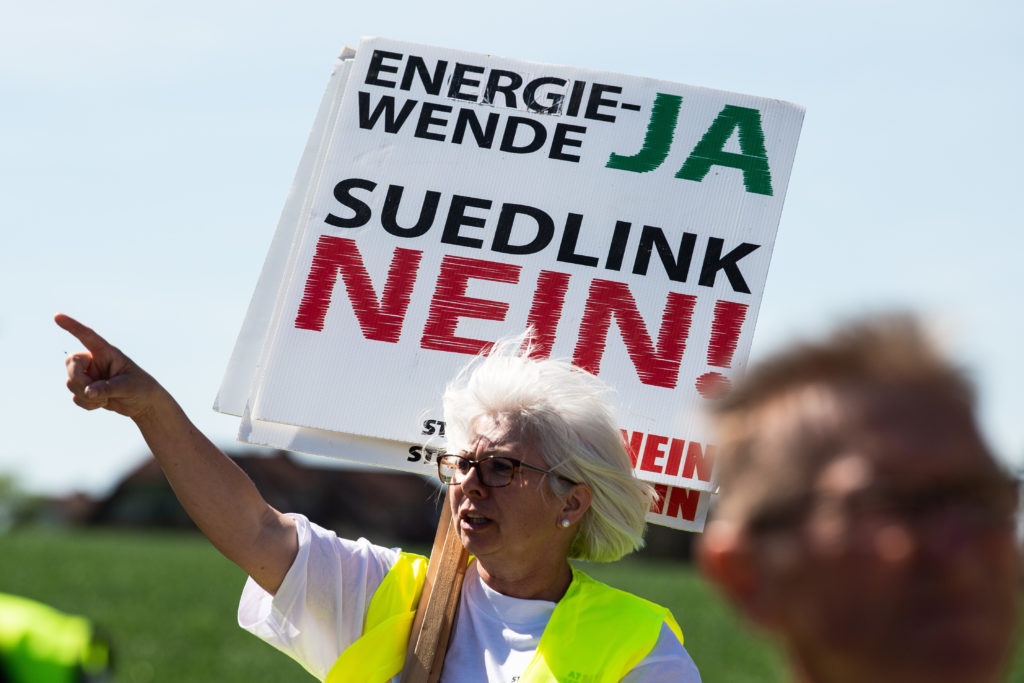energiewende
The unprovoked Russian war against Ukraine has resulted in an electric energy crisis in Europe, in particular in Germany. Because of the escalation between sanctions and gas deliveries, Russia on September 2 for an indefinite time shut down Nord Stream 1, the main pipeline for the natural gas deliveries to Germany. It triggered higher electricity prices not only in Germany but all the surrounding countries. The indefinite time was further extended on September 26 after both Nord Stream 1 and Nord Stream 2 pipelines ruptured after a series of explosions. Added to the serious concerns about exceedingly high electricity prices are now concerns in Germany for the coming winter about grid reliability, as well as for the ability to adequately heat buildings.
However, there is more to the story about the crisis than losing the Russian gas through the Nord Stream pipelines. Germany has been fortunate to be able to import substantial amounts of electricity when short on own generation, but this summer the availability of power to import has been reduced. France, normally the biggest exporter of power in Europe, has had more than half of their nuclear reactors offline due to routine maintenance or to evaluate the risks of corrosion problems. In addition, the record drought in Europe dropped the water levels in many large rivers, not least in France. It reduced the hydro generation as well as put restrictions on the output from some of the nuclear reactors in operation. (The latter is due to limitations of the amount of available/allowed cooling water.)
CONTINUE READING >>
On February 24 Russia started an unprovoked full-scale invasion of Ukraine. It has resulted in colossal damage and sufferings. How the war will end nobody knows, but it seems clear that Ukraine will remain a free, independent, and democratic nation, while Russia will achieve truly little, if anything of its goals.
The war in Ukraine will also have unintended and significant energy and environmental consequences in all Europe. For some countries there will be changes in the direction of their respective energy structures and plans. In other cases, the direction will remain unchanged, but the speed of change will accelerate.
The most immediate change happened when Ukraine synchronized its electric grid with the ENTSO-E grid (European Network of Transmission System Operators for Electricity) on March 16. By all means and measures it was a huge engineering accomplishment. The first discussion had started in 2017. The target for completion was originally set for 2026, later adjusted to early 2023.
Cutting the electric ties with Russia so quickly was enabled by Ukraine having adequate domestic power generation. For the three Baltic States, Estonia, Latvia, and Lithuania it will be more challenging to desynchronize from the Belarus-Russia grid, since they are net importers of power. The solution here will be to building more transmission ties with Sweden, Finland, and Poland. The technology of choice and necessity is HVDC. There are already HVDC connections between Finland and Estonia, Estlink 1 and 2 with the combined capacity 0f 1000 MW. The NordBalt 700 MW HVDC link between Sweden and Lithuania has been in operation since 2015. When Harmony Link, the 700 MW HVDC link between Lithuania and Poland will be completed in 2025, it will be possible to cut all electric ties with Belarus and Russia.
The importance of strong ties with neighboring countries and the significance of HVDC for bilateral connections with submarine cables was very recently well illustrated when Russia announced suspension of electricity sales to Finland, which can be as much as 1300MW. Thanks to the strong AC and DC ties with Sweden, including the 1300 MW Fenno-Skan HVDC links, Finland easily offset the electric imports from Russia.

For the electric power generation, the consequences of the Russian invasion of Ukraine will be even bigger. Reactions from the European countries came fast and strong: Europe to be fully independent from Russian oil and gas by 2030, and already by the end of 2022 to have reduced the imports by two-thirds. Germany, who is the biggest importer of natural gas, takes about 55% of its gas from Russia. Seeing the writing on the wall, in February 22 this year, two days before Russia’s invasion, Germany put Nord Stream 2 on hold. This underwater pipeline would have doubled the export of natural gas to Germany from 55 billion cubic meters (bcm) to 110 bcm.
As part of the German Energiewende, the energy transition, in addition to the growth of wind and solar increasing the use of natural gas was a key component in the plans to replace the power from the remaining nuclear plants scheduled to be closed by the end of this year, and to phase out the coal plants, scheduled to be completed by 2037.
To compensate for the reductions in natural gas from Russia, Germany will have to increases in import of liquified natural gas (LNG), not least from the United States, but to replace all imported gas will require more LNG terminals to be built. There is also an opposition against natural gas produced by fracking to overcome. In the short-term we may also see the coal plants run more and for a longer time. Continue to operate the nuclear plants beyond 2022 could also be an option, but it is unlikely Germany will change its course on exiting nuclear power. The public and political opposition against nuclear remains strong. One can expect an intense debate between “pragmatists”, who prefer a longer use of conventional resources and more use of natural gas, at least as a transitional energy source, and “green purists”, who want to see an accelerated path towards 100% of Germany’s electricity to be generated from renewables.
In any case, Germany will continue to expand wind and solar generation. The Economy Ministry has proposed new legislation to increase onshore wind capacity annually by 10 GW by 2027, and solar to 20 GW annually by 2028. Corresponding numbers are now about 3 GW and 7 GW respectively. The target is to reach 200 GW installed capacity of solar, mostly rooftop solar, 100 GW of onshore wind and 30 GW of offshore wind by 2035. These are immense numbers, considering the present peak power demand in Germany is presently about 85 GW and average demand is around 55 GW. Given the plans to decarbonize/electrify the transportation, the industrial and the building sectors, the electric demand is expected to grow substantially, up to 200 GW by 2045. Even so, the planned growth of installed generation capacity will far exceed the expected demand.
If the targets are achieved, Germany will have 78% renewable energy, mostly from wind and solar, by 2035. Operating a system with such a high percentage of variable renewable sources is not a trivial matter. Several scenarios how the future German electric energy system will look like have been made by analysts and researchers. The conclusion is that for most of the time it will work well, assuming access to large amounts of flexible generation resources, battery storage and import of electric power from neighboring countries. At times of severe shortage massive quantities of imports will be needed. It will require substantial strengthening of the transmission ties.
Agora Energiewende has developed a tool, “Future Agorameter”, to calculate probable future power generation and consumption situations. Using this tool one can compare future scenarios with actual conditions, using same weather data. As an example, the week of May 17-20 (2022) had generation and demand as shown below. Periods of excess and shortage were managed by export and import, respectively.

This picture will change dramatically going forward. A possible situation, based on targeted expansion of wind and solar for 2035 is shown below. Residual load refers to load to be served by imports, battery storage and conventional power generation. The total demand, as well as the amplitude between peak and valleys in generation and demand, will be much higher than in 2022.

In the future German electric system, there will also be periods of vast amounts of excess power. To avoid curtailing generation during those periods, some of the excess power may be exported to neighboring countries and/or stored in batteries, but it will be far from enough to avoid curtailing. For proponents of green hydrogen, it represents an opportunity cost to produce green hydrogen. Thirty percent of the electric energy is lost in the electrolysis, compression, and transportation of the hydrogen. It makes it much less efficient and less economical than using the electricity directly or stored in batteries, but the equation changes when the electric power is “free”.
Recognizing the possibilities of hydrogen of bulk energy storage, and as a potential fuel source for flexible generation, as well as the need for green hydrogen to enable production of “green steel”, Germany developed early a National Hydrogen Strategy. As part of the strategy, it also seeks to make Germany becoming a leader and exporter of green hydrogen technologies. $8.1 billion has been allocated to speed up the commercialization of hydrogen technologies, and to achieve 5 GW electrolyzers capacity by 2030. This target is now expected to be raised to 10 GW. Some studies suggest over 80 GW by 2045 as part of the Energiewende.
The energy transition is not a done deal, far from it. As with most long-term plans and forecasts there are many challenges and uncertainties, ahead. Assumptions of legislative and financial support can change. Can all the wind and solar be built? Can all needed new transmission lines be built? Will neighboring countries have enough power to export to Germany? Will decarbonization of the transportation sector move forward as projected or will supply chain issues for batteries slow the growth. If that happens, will hydrogen be more interesting to store energy and power vehicles? Will there be new battery technologies? Will progress of carbon capture utilization and storage (CCUS) will make natural gas more attractive and utilized? Will small modular reactors bring a renaissance for nuclear power? Etc.
Germany is not unique in targeting net zero emissions by 2045. Many other countries have the same goal by 2045 or 2050, but are accepting large hydro, new nuclear and/or natural gas with CCUS as part of the portfolio of technologies to get them there at a lower cost, and maybe faster. What makes Germany unique is their approach to achieve the net-zero goal with such a high portion, close to 90% of variable renewable sources, wind and solar.
Triggered by the Russian invasion of Ukraine, Germany will accelerate its already aggressive energy transition. The massive expansion of wind and solar may also get green hydrogen to take off. If so, who would have guessed such unintended consequences of the invasion? Certainly not Russia.
Energiewende, The German Energy Transition. In a 1954 the Atomic Energy Commission Chairman Lewis Strauss in a speech predicted that “It is not too much to expect that our children will enjoy in their homes electric energy too cheap to meter.” While later disputed whether the optimism was based on high expectations of fusion energy or on nuclear power in general, the phrase has stuck with critics of over-promises of not only nuclear energy but also of other “new technologies”.
If not “too cheap to meter” in 2004 the German Minister for Environment, Nature Conservation and Nuclear Safety, Jürgen Trittin, came close, when he (in)famously stated that the surcharge (“Umlage”) for the German Energy Transition (“Energiewende”) to renewable energy, primarily wind and solar, for a household would amount to “only around one euro per month, the price of a scoop of ice cream”.
The reality turned out differently. A German household has now (2018) some of the highest prices for electricity in Europe, 33.9 cents/kWh, including the surcharge for the energy transition. As a comparison the average retail electricity price (2018) in Europe is about 24 cents/kWh and in the United States is 13.9 cents/KWh.
CONTINUE READING >>
There is a slogan for electric transmission that it is not about how much power you generate. It is about how much you deliver. There is a lot of truth to that. It was the innovations of electric transmission well over 100 years ago that enabled the modern electric system by bringing remote generation to the load.
Today a robust transmission grid is a prerequisite to economically and reliably balance generation and load. With more variable generation resources on the system, wind and solar, transmission is again the enabler. However, regardless how strong the rational for strengthening the transmission grid may be, the opposition against building new transmission can be equally strong or stronger. At few places it is more evident than in Germany.

CONTINUE READING >>
Germany is the 4th largest economy in the world. Consequently, when Germany launched its Energiewende to transform its electric industry from fossil fuels to 80 % renewable by 2050, it got worldwide attention. If such a large economy could make this transformation and stay competitive as a nation, other large economies should also be able to follow.
Germany started out with trademark German determination. To make transformation even more aggressive, after the Fukushima nuclear incident, they decided in 2011 to exit all nuclear by 2022. Progress has been impressive. By 2015 renewable energy represented 31 % of all electric energy consumption.
If California was a nation, it would be the world’s 6th largest economy. In an executive order, B-30-15, the statewide goal was set to reduce greenhouse gas emissions 40 % below 1990 levels by 2030. As part of this goal California has set the ambitious goal to transform their electric consumption to reach 50% of renewables by 2030. At the end of 2015 renewable energy has reached 26 %. However, contrary to Germany this target does not include large hydro! Trying to compare apples and apples with Germany by including large hydro, California was well over 30 % of all electric consumption from renewables.
CONTINUE READING >>
“When you come to a fork in the road, take it!” was Yogi Berra’s way to give directions to his house. In his case he was right, since both roads led to his house. In the case of the German Energiewende it is not as clear what road to take and some roads may not even lead to the destination.
CONTINUE READING >>
Achieving 100% renewable energy was not so long ago seen as a dream. Now recognized to be viable, many cities around the world have set such targets.
Still it is not a trivial task to get to 100% renewable energy, while at the same time ensure reliable and affordable electric power. A key enabling factor is being connected to a large and robust electric grid. It gives access to remote renewable resources and it is the most cost efficient way to balance the variability of wind and solar. Let’s take a closer look at a couple of cases.
CONTINUE READING >>
The German Energiewende is the largest undertaking in the world to transition to renewable energy. Rightfully it is getting a lot of attention. There already many lessons to be learnt of what to do and also some of what not to do.
Smaller in magnitude but also well worth paying attention to are two American versions of Energiewende. One is a state, Hawaii, and the other is a city, Fort Collins, Colorado.
Sunday August 18 Germany set a new renewable record. That day at 2 pm generation from renewable energy sources provided 75 % of all power needed to satisfy the total demand of electric energy.
Less noticed was that Burlington Electric Department, Vermont, in September with the purchase of a 7.4 MW hydroelectric facility achieved its goal of reaching 100 % from renewable energy.
While Germany’s August 18 record was a peak, Burlington’s 100 % is basically on a continuous basis.
What makes Burlington Electric’s achievement additionally impressive is that retail electricity rates in Burlington are less than half of the rates in Germany, 13.7 cents/kWh (time of use rate 2014) versus 36.25 cents/kWh (average 2013).